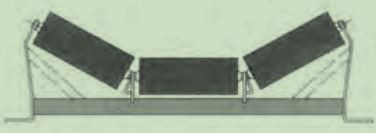 Afrikaans
Afrikaans  Albanian
Albanian  Amharic
Amharic  Arabic
Arabic  Armenian
Armenian  Azerbaijani
Azerbaijani  Basque
Basque  Belarusian
Belarusian  Bengali
Bengali  Bosnian
Bosnian  Bulgarian
Bulgarian  Catalan
Catalan  Cebuano
Cebuano  Corsican
Corsican  Croatian
Croatian  Czech
Czech  Danish
Danish  Dutch
Dutch  English
English  Esperanto
Esperanto  Estonian
Estonian  Finnish
Finnish  French
French  Frisian
Frisian  Galician
Galician  Georgian
Georgian  German
German  Greek
Greek  Gujarati
Gujarati  Haitian Creole
Haitian Creole  hausa
hausa  hawaiian
hawaiian  Hebrew
Hebrew  Hindi
Hindi  Miao
Miao  Hungarian
Hungarian  Icelandic
Icelandic  igbo
igbo  Indonesian
Indonesian  irish
irish  Italian
Italian  Japanese
Japanese  Javanese
Javanese  Kannada
Kannada  kazakh
kazakh  Khmer
Khmer  Rwandese
Rwandese  Korean
Korean  Kurdish
Kurdish  Kyrgyz
Kyrgyz  Lao
Lao  Latin
Latin  Latvian
Latvian  Lithuanian
Lithuanian  Luxembourgish
Luxembourgish  Macedonian
Macedonian  Malgashi
Malgashi  Malay
Malay  Malayalam
Malayalam  Maltese
Maltese  Maori
Maori  Marathi
Marathi  Mongolian
Mongolian  Myanmar
Myanmar  Nepali
Nepali  Norwegian
Norwegian  Norwegian
Norwegian  Occitan
Occitan  Pashto
Pashto  Persian
Persian  Polish
Polish  Portuguese
Portuguese  Punjabi
Punjabi  Romanian
Romanian  Russian
Russian  Samoan
Samoan  Scottish Gaelic
Scottish Gaelic  Serbian
Serbian  Sesotho
Sesotho  Shona
Shona  Sindhi
Sindhi  Sinhala
Sinhala  Slovak
Slovak  Slovenian
Slovenian  Somali
Somali  Spanish
Spanish  Sundanese
Sundanese  Swahili
Swahili  Swedish
Swedish  Tagalog
Tagalog  Tajik
Tajik  Tamil
Tamil  Tatar
Tatar  Telugu
Telugu  Thai
Thai  Turkish
Turkish  Turkmen
Turkmen  Ukrainian
Ukrainian  Urdu
Urdu  Uighur
Uighur  Uzbek
Uzbek  Vietnamese
Vietnamese  Welsh
Welsh  Bantu
Bantu  Yiddish
Yiddish  Yoruba
Yoruba  Zulu
Zulu Drive Rollers for Belt Conveyors | High-Quality Conveyor Solutions
Drive Rollers for Belt Conveyors
Belt conveyors are an essential component in many industries, facilitating the movement of materials from one point to another with ease and efficiency. Among the various components that make up a belt conveyor system, drive rollers play a crucial role in ensuring optimal performance and reliability. This article will explore the significance of drive rollers in belt conveyors, their types, and their applications.
Drive Rollers for Belt Conveyors
There are several types of drive rollers available, each designed to suit different operational requirements. The most common types include crowned rollers, flat rollers, and tapered rollers. Crowned rollers have a slight curvature on their surface, which helps maintain proper belt alignment and prevents slippage. Flat rollers, on the other hand, provide a uniform surface for the belt to grip. Tapered rollers are often used in applications where the belt needs to be guided closely, as their shape can help reduce friction and facilitate smoother operation.
drive rollers for belt conveyors

The material of the drive roller is also an important consideration. Common materials include steel and rubber, each providing distinct advantages. Steel rollers are known for their durability and strength, making them ideal for heavy-duty applications. Rubber-covered rollers, however, offer enhanced grip and are often preferred in applications involving lighter loads or where noise reduction is a concern.
Proper maintenance of drive rollers is essential for ensuring the longevity and efficiency of a belt conveyor system. Regular inspections should be conducted to check for signs of wear, misalignment, or damage. Lubrication of roller bearings and cleaning of debris are also crucial steps to prevent mechanical failures and maintain optimal performance.
In addition to their functional significance, drive rollers can have an impact on the overall energy efficiency of a conveyor system. By choosing the right size and type of roller, companies can minimize energy consumption and reduce operational costs. Moreover, advancements in roller design and materials continue to enhance the efficiency and reliability of these components.
In conclusion, drive rollers are a vital part of belt conveyor systems, providing the necessary power to move materials effectively. Understanding the different types of drive rollers, their materials, and maintenance requirements allows industries to select the right solutions for their specific needs. As technology advances, the efficiency and effectiveness of drive rollers will continue to evolve, further optimizing conveyor systems across a range of applications.
-
Revolutionizing Conveyor Reliability with Advanced Rubber Lagging PulleysNewsJul.22,2025
-
Powering Precision and Durability with Expert Manufacturers of Conveyor ComponentsNewsJul.22,2025
-
Optimizing Conveyor Systems with Advanced Conveyor AccessoriesNewsJul.22,2025
-
Maximize Conveyor Efficiency with Quality Conveyor Idler PulleysNewsJul.22,2025
-
Future-Proof Your Conveyor System with High-Performance Polyurethane RollerNewsJul.22,2025
-
Driving Efficiency Forward with Quality Idlers and RollersNewsJul.22,2025





























